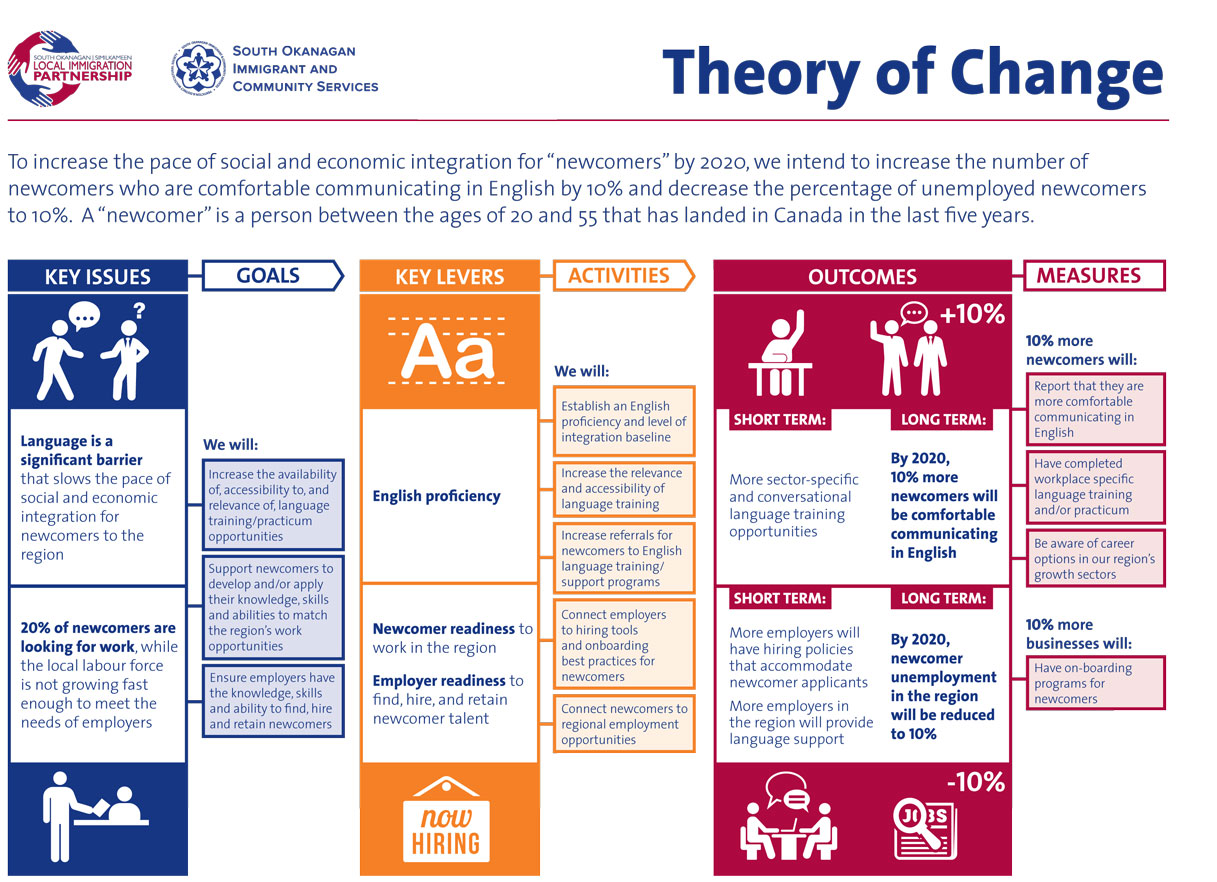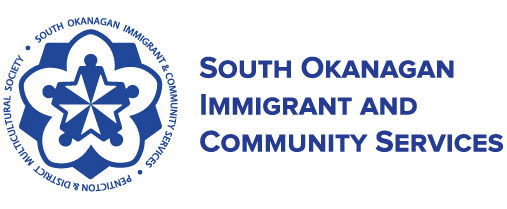Integration is a two way street involving commitment on the part of the immigrants and refugees to adapt to life in Canada and a commitment from Canadians as employers, politicians, educators and community, to welcome and embrace new population and cultures.
Theory of Change
Large-scale social change requires broad cross-sector coordination. Our aim is to affect needle-moving change and we believe that long-term investment by stakeholders is necessary to make this change.
The SOS LIP Council is a group of members working to develop an integrated approach that will fundamentally improve newcomer outcomes in our local communities. To this effect, the SOSLIP Council embodies the principles of Collective Impact. These include:
- Funders and implementers understand that social problems, and their solutions, arise from the interaction of many organizations within a larger system
- Progress depends on working toward the same goal and measuring the same things
- Large scale impact depends on increasing cross-sector alignment and learning among many organizations
- Corporate and government sectors are essential partners
- Organisations actively coordinate their action and share lessons learned
Reference: Fay Hanleybrown, John Kania, & Mark Kramer: Channeling Change: Making Collective Impact Work
The SOSLIP Council is committed to measuring progress along a common agenda, promoting alignment among the goals of different organisations, and using collaborative problem solving for an ongoing learning community.
Using the Collective Impact model, SOSLIP Council and a Collective Steering Committee developed our Theory of Change (ToC). There are two key issues that are driving our action plan:
- Language was identified as a barrier that slows the pace of social and economic integration; and
- Newcomers are looking for employment while the local labour force is not growing fast enough to meet the needs of the employers.
Activities are being developed to address the key levers of English proficiency, newcomer readiness to work in the region and employer readiness to find, hire and retain newcomer talent.

